
Words by Jessica Bumpus
Photography by Paul Read
Three years ago Carl Fox hadn’t even touched a piece of leather. Today, from his studio in Deptford, it’s his sideline obsession. “My little babies”, he says of his geometric pieces of art: squares and rectangles of leather in pleasing jarring shades, fixed onto wooden canvases. Some are large, some are small, and some feature panels of wood with commanding grain. Titled ‘Unsteady Giants’, they are his first leather and marquetry series.
“You will not see a dolphin”, he says, following a comment on their overall magic eye puzzle quality. The pieces draw you in. Some viewers have seen poodles, faces and “ant people” in the wood grain – which he laughs has totally ruined the meaningfulness of the artwork. But for him, “the grain is very much about emotion,” and it contrasts with his passion for the solid blocks of leather.
It was when the Surrey-born maker made a gift for a friend with some leather offcuts that his new-found passion and career segue began. “I started off as a bit of a weird teenager back in a little village in Surrey and really just wanted to get out”, he says. “I was quite good at education and I really wanted to work with my hands.” He became a hairdresser and a colourist. It was, he says, a stable job. “You would never have any excuse to leave that job, even though I wanted to work with my hands” – namely to explore craft, he says.
Then along came the pandemic. He was furloughed. “And I had the opportunity to further myself.” Cue the gift for the friend and discovery of leather. It was the first time he’d worked with it and it proved a turning point. Carl says he “devoured everything” he could get his hands on and taught himself leatherwork. He established his brand, Paulo Vulpes, meaning “little fox” in Latin, in April last year, and specialised in creating accessories to a high standard. Soon after, a bag design of his was featured by Forbes.
“My passion has always been furniture and interiors, mid-century aesthetics and that kind of classic 50s 60s gentleman’s feel – think Tom Ford’s cinematic adaptation of Christopher Isherwood’s ‘A Single Man’, for example.” He loves Brutalism and Modernism. Over the years he has learned a range of skills, spanning interior design and furniture restoration.
“I was quite aware that I wanted to do an art series that combined what I was doing with an idea of mental health as well, and when I looked at these Brutalist buildings they’re like this sturdy structure but they’re sort of blocky. And this might sound weird but if you take one away the whole thing will come tumbling down and I liken that to my own mental health”, he says, and notes that he felt it was a significant thing for many people during the pandemic. “So the blockiness was built from that idea.”
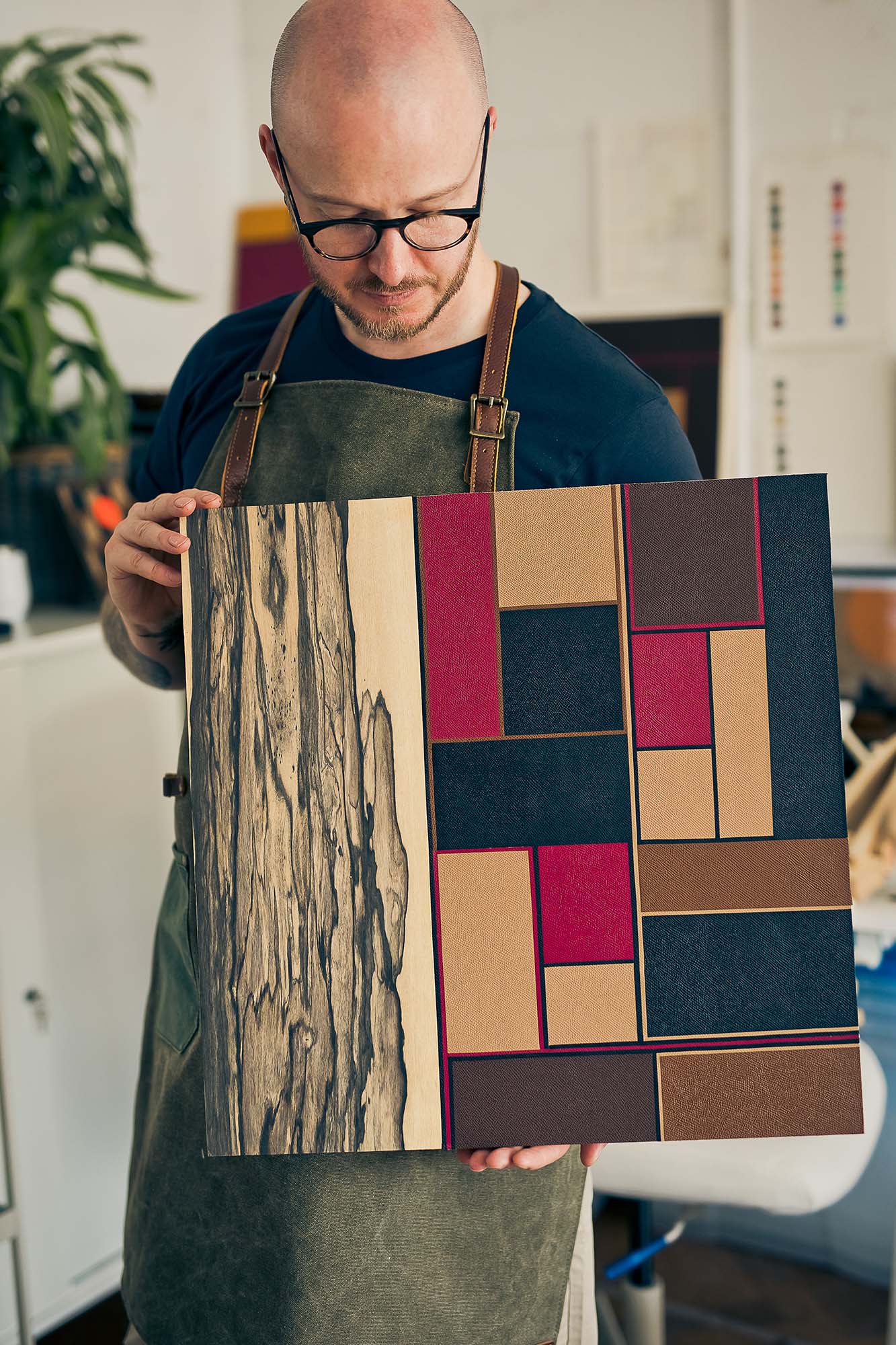
“I never really saw myself as an artist before. I saw myself as a craftsperson and the whole thing has ended up merging into one.”
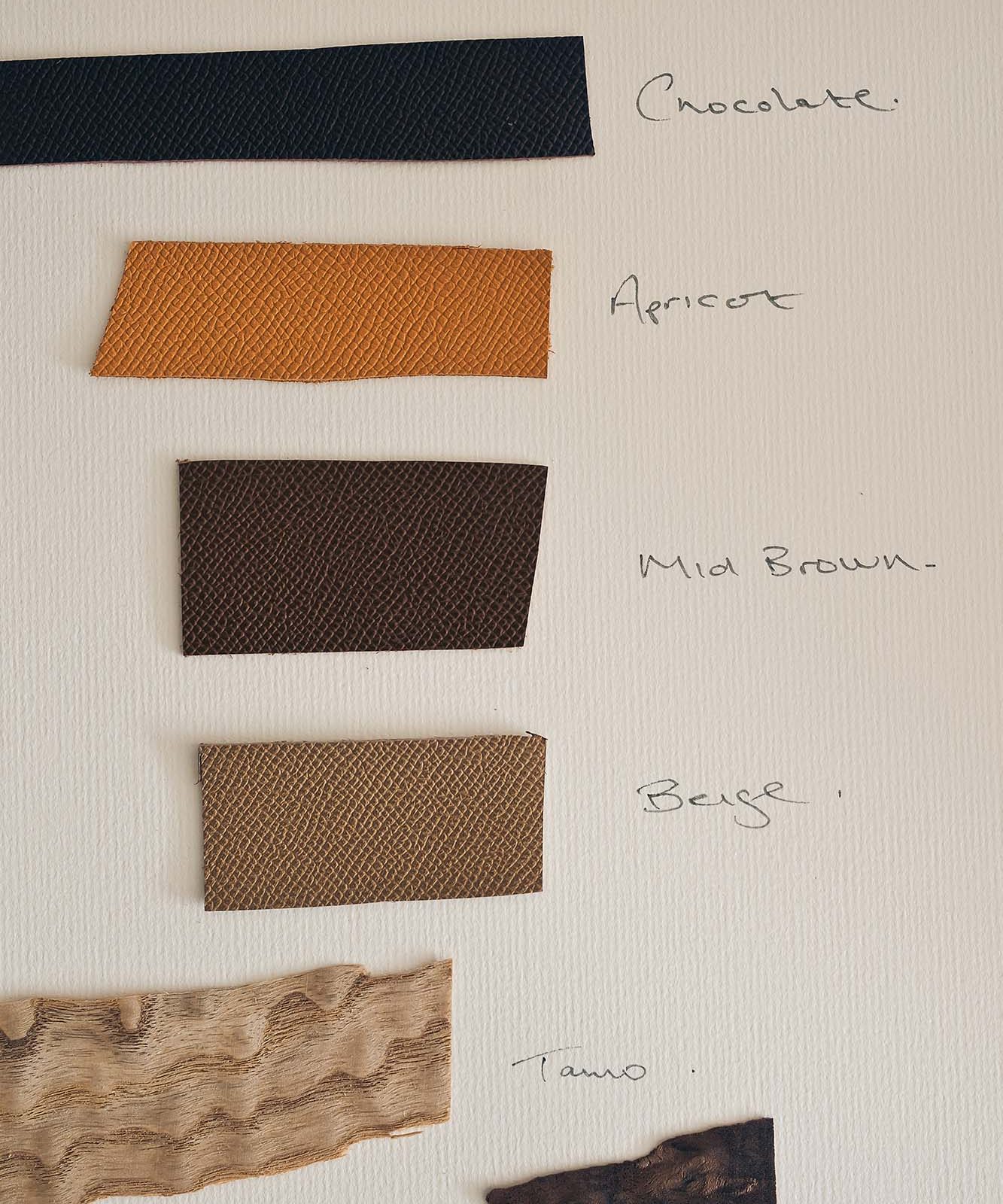
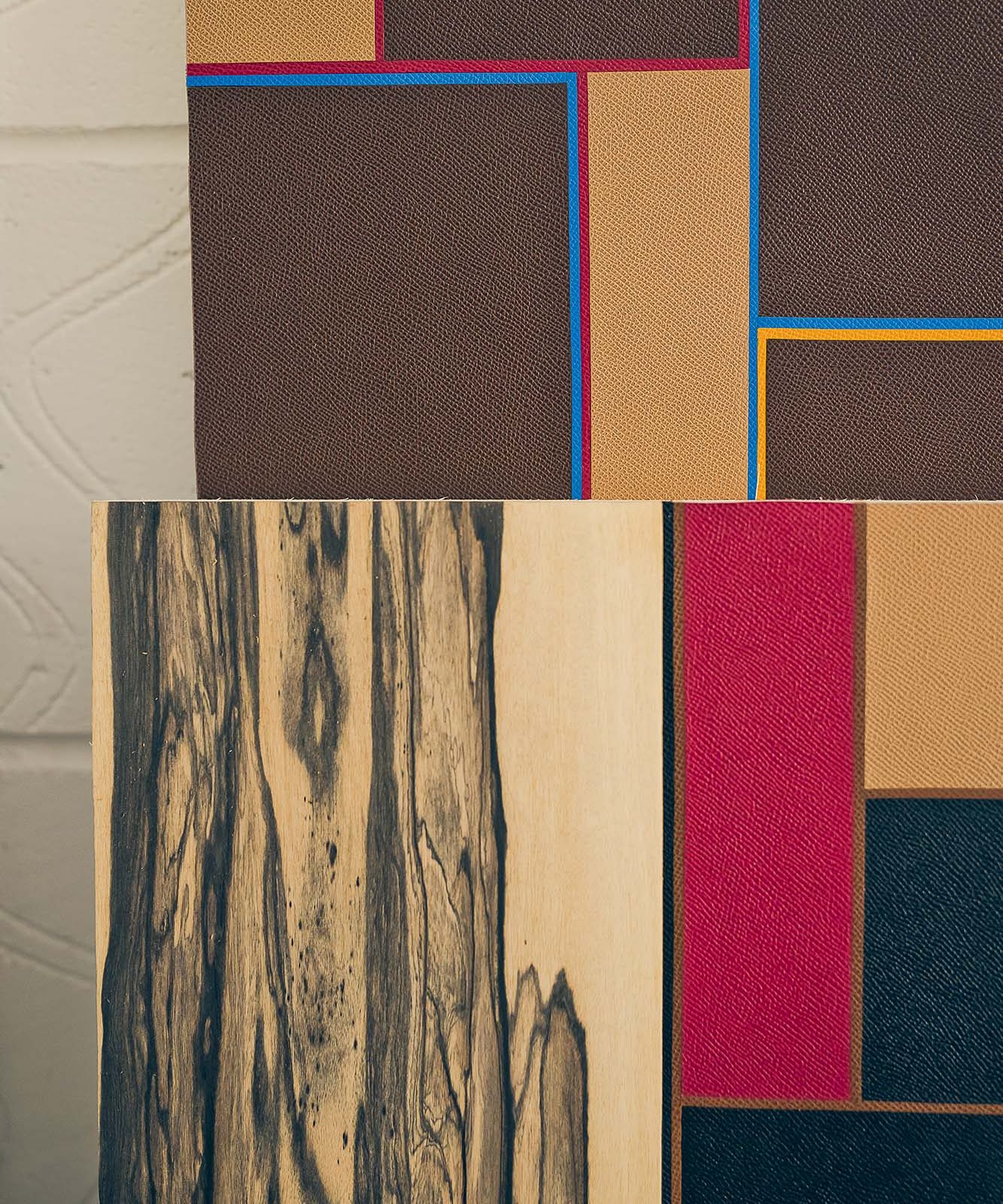
The Leathersellers’ Award at Cockpit Arts, which he applied for in October last year, has enabled him to make the leap from accessories to interiors. “That gave me the opportunity to think outside the box.” He explains that most of his work – which he is now moving to creating under his own name – is inspired by architects, especially American architects, or furniture makers, name-checking Frank Lloyd Wright.
“I never really saw myself as an artist before. I saw myself as a craftsperson and the whole thing has ended up merging into one.” He found that the highly structured ideas he had in the beginning would often take a new direction along the way.
It was during lockdown – when he also undertook a psychology degree – that he really learned his trade: from YouTube videos and reading as much as he could.
“I had always worked with other materials but I think leather just seemed out of reach. You grow up with luxury leather brands and when you’re younger they’re slightly untouchable and seen as this really challenging thing, but actually once I got hold of this material I realised it is tricky but I just loved the process.”
Part of Carl’s process is to use offcuts of leather so that nothing goes to waste. It’s something that stems from his job working with the sustainable cosmetics company Aveda.
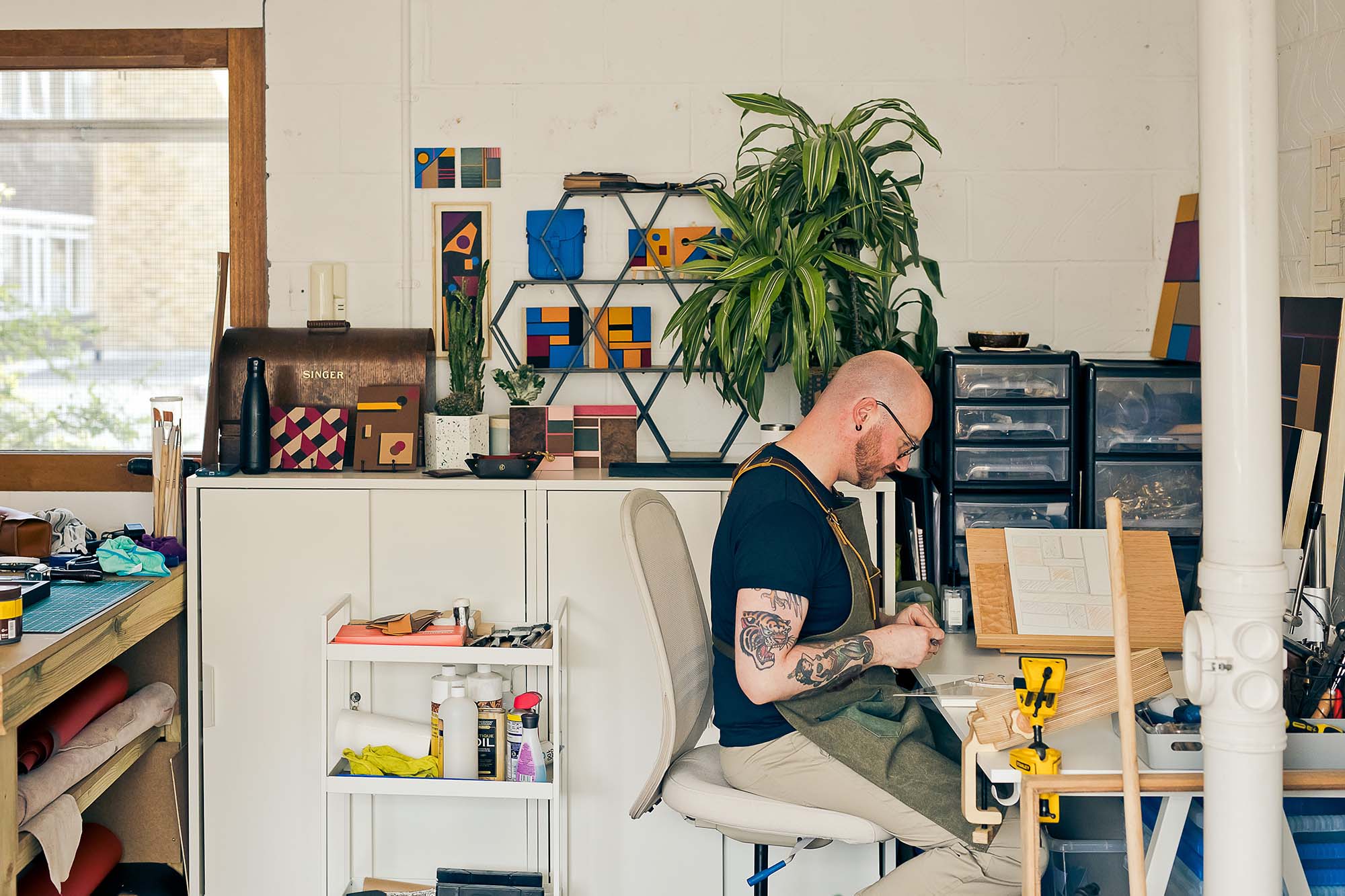
“I wanted really good quality leather and materials, but I was aware that those materials could be used in fast fashion, the over-production so I wanted to find surplus material.” All his leathers are surplus from luxury good brands. There are rolls of them in yellow, pink and blue beneath the workbench, waiting to be used, but the rest of the space is spotless and clean.
Having always viewed leather as a material for high-end handbags and therefore limited in scope, the more Carl got into it the more he has found new ways of using it. “Marquetry is traditionally a wood-based craft”, he says. And this is the twist he added to his work, with veneer and texture. Every single piece of leather is cut by hand, with every bit of wood and leather measured and worked to be at the same height so that the pieces are essentially seamless to the touch. Fox takes a week or so to complete a piece – accounting for the fact that he still has a day job. His next steps involve looking for some representation as he continues to explore where the Uneasy Giants series might go.
He describes his work as being part fashion, part furniture, part heirloom. “To have a piece of leatherwork you can have around forever,” he says, “that gives the work depth and meaning – it’s satisfying to give a material a new image.”
This article originally appeared in the 2021-2022 Leathersellers’ Review.
Carl was supported by a Leathersellers’ Award grant through Cockpit Arts. This partnership has supported makers working with leather at Cockpit since 2012, with over 25 individuals having benefited, most over several years. Each award year provides a studio cost subsidy and engagement with the business incubation services, as well as a Leather Hub manager and maintenance of the Hub itself. This year a further grant was offered, committing our continued support to makers in this way until at least 2025.
READ MORE
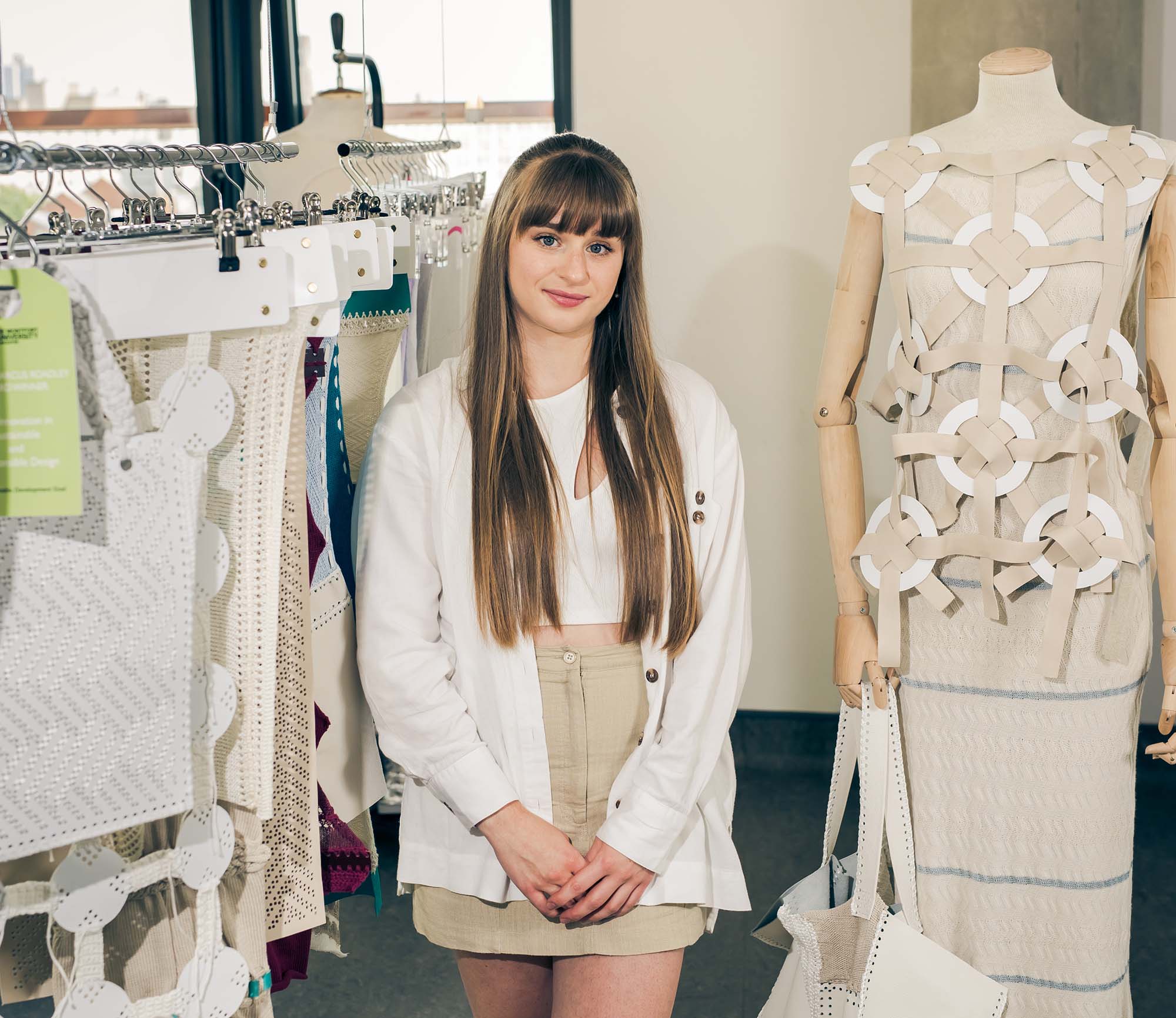
Fashioning History
For an inspired project at Leicester’s De Montfort University, students of “Artifacts Live” are drawing on the lessons of historic leathercraft to create the designs of the future.
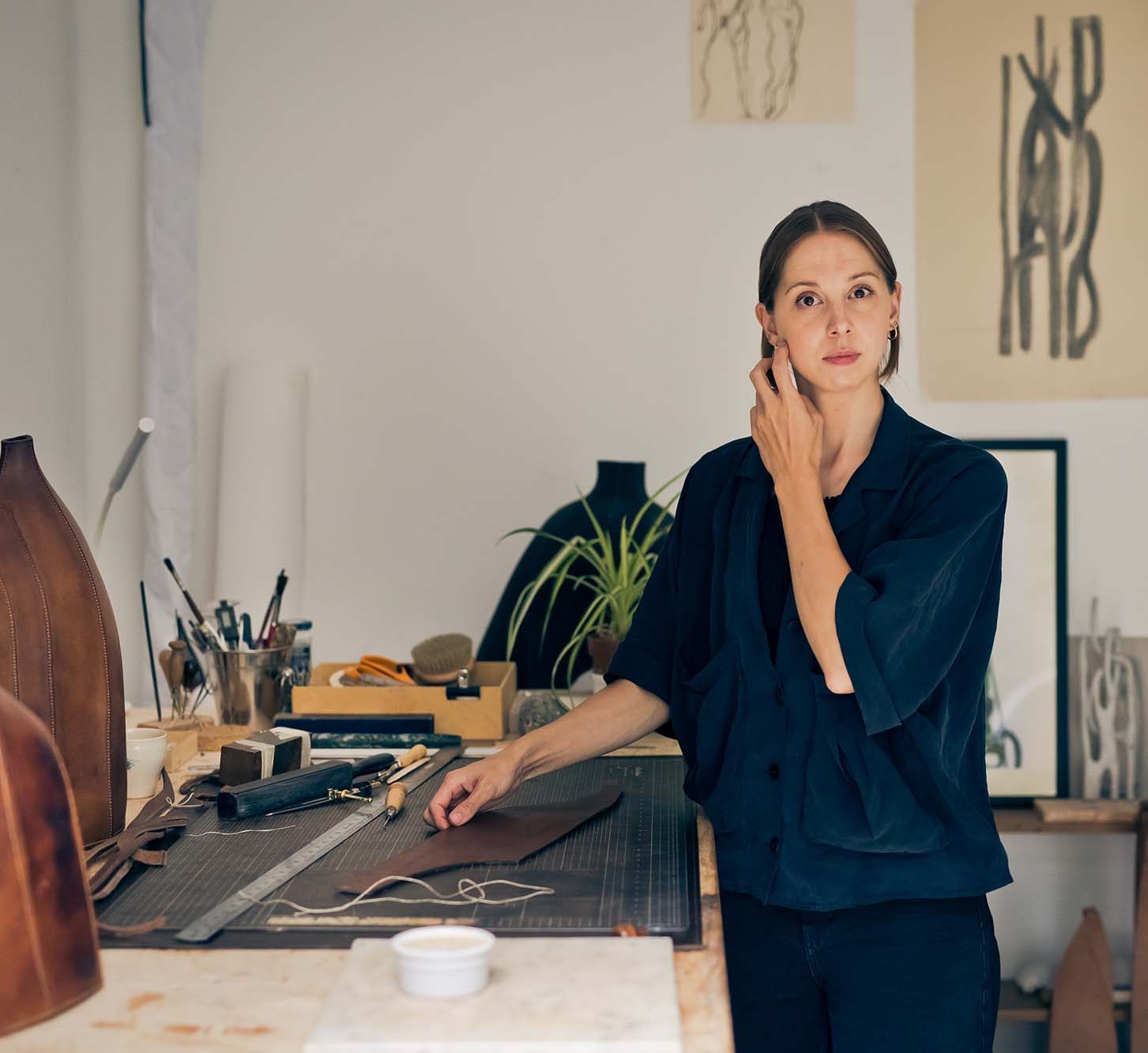
Dream Maker
In her sleep, Frances Pinnock finds inspiration for her figurative leather sculptures.
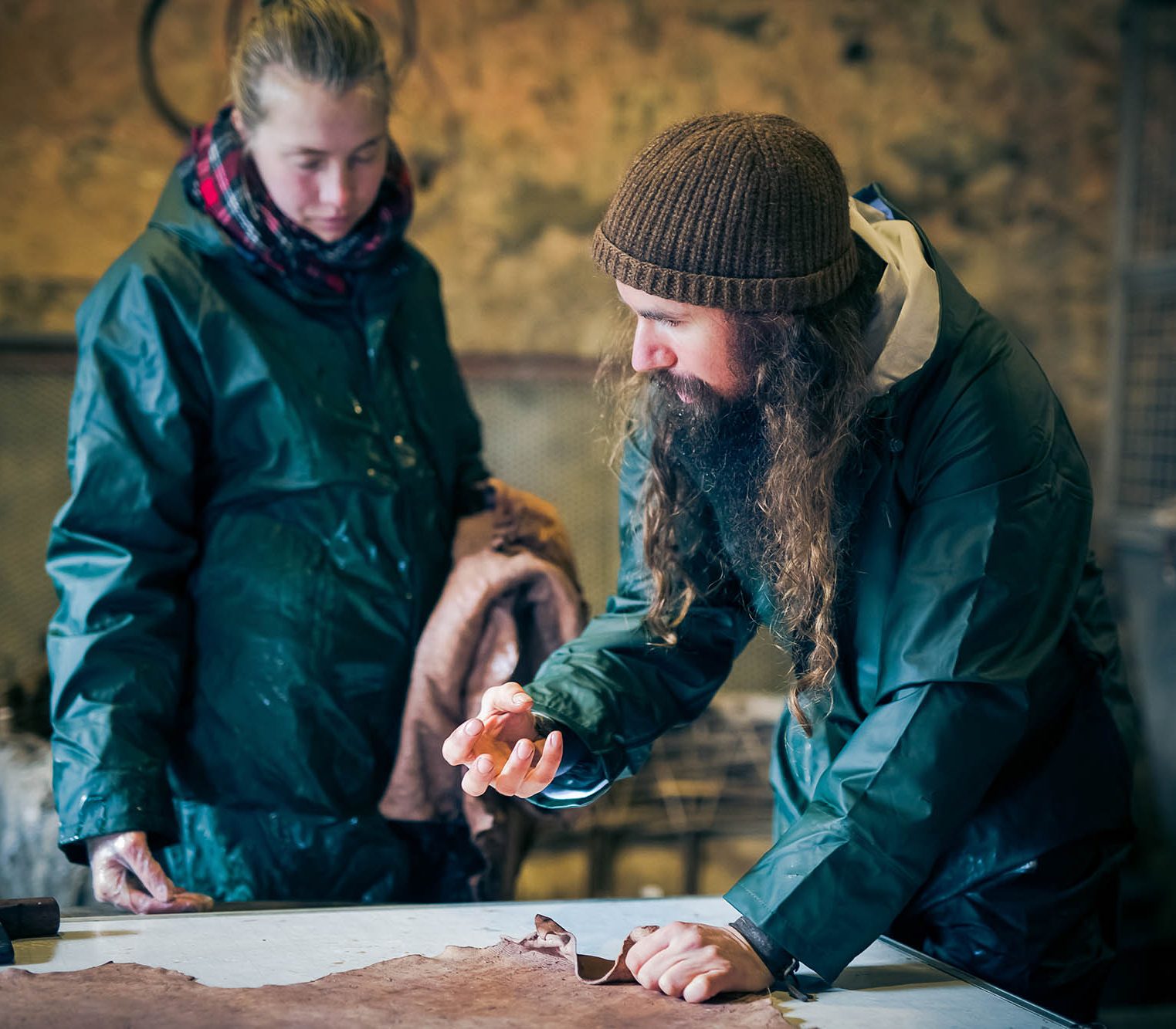
Woodlands Tannery
At a trailblazing micro-tannery in Fife, a dynamic duo is reviving the lost art of traditional Scottish tanning.